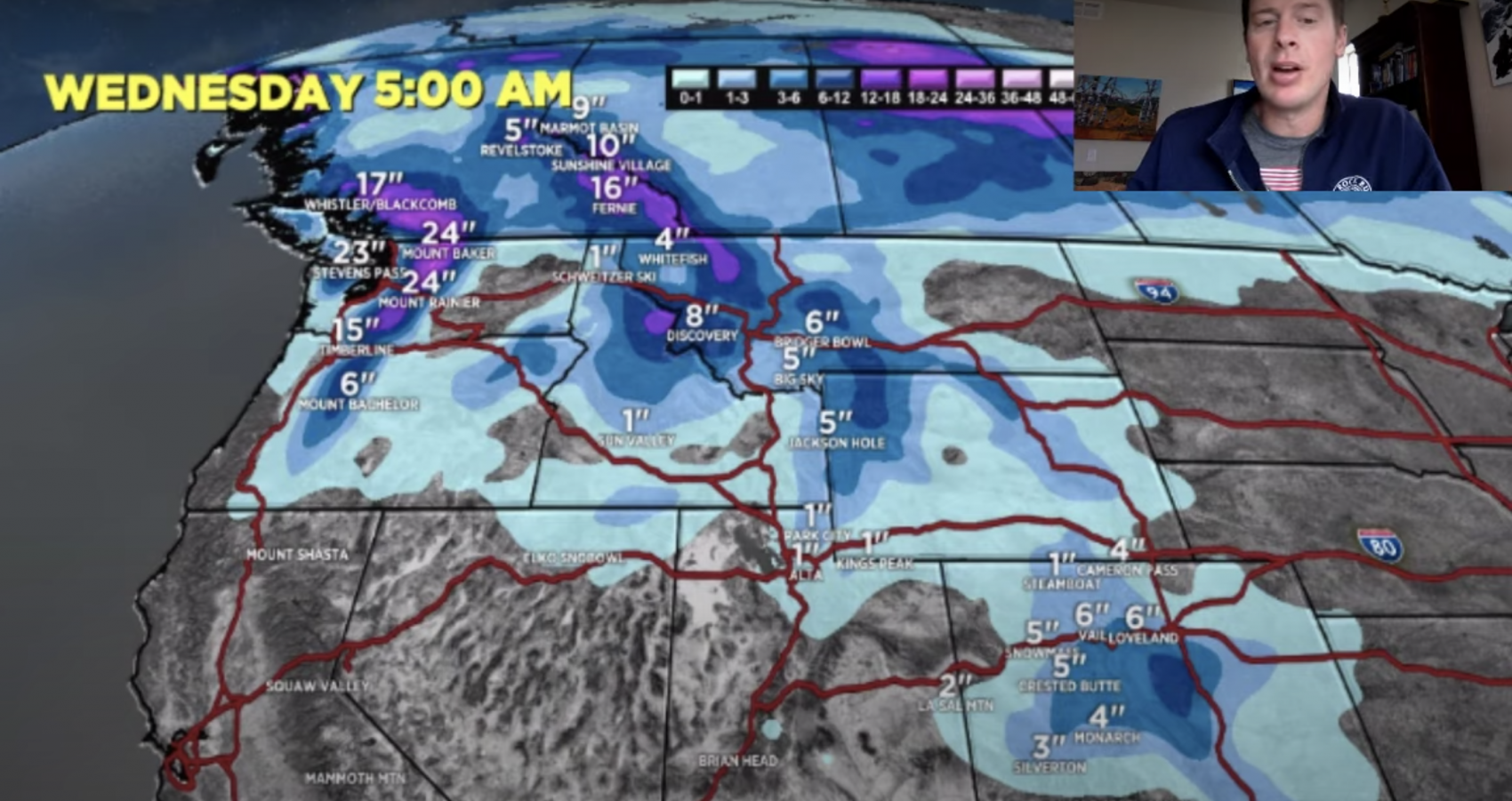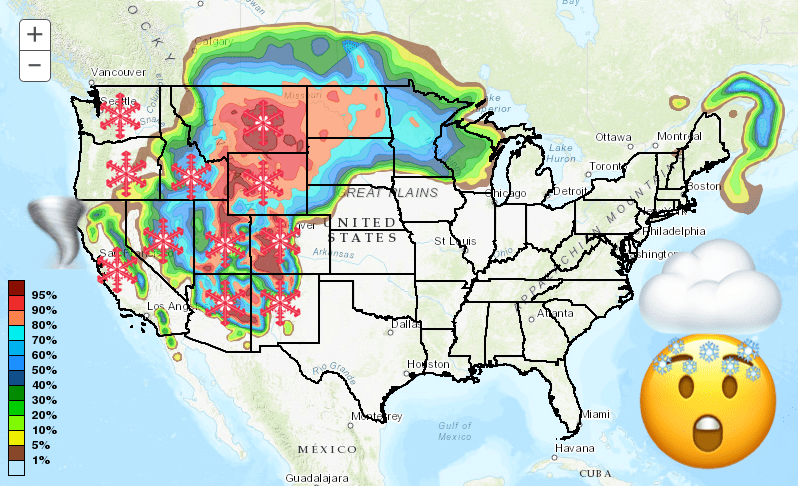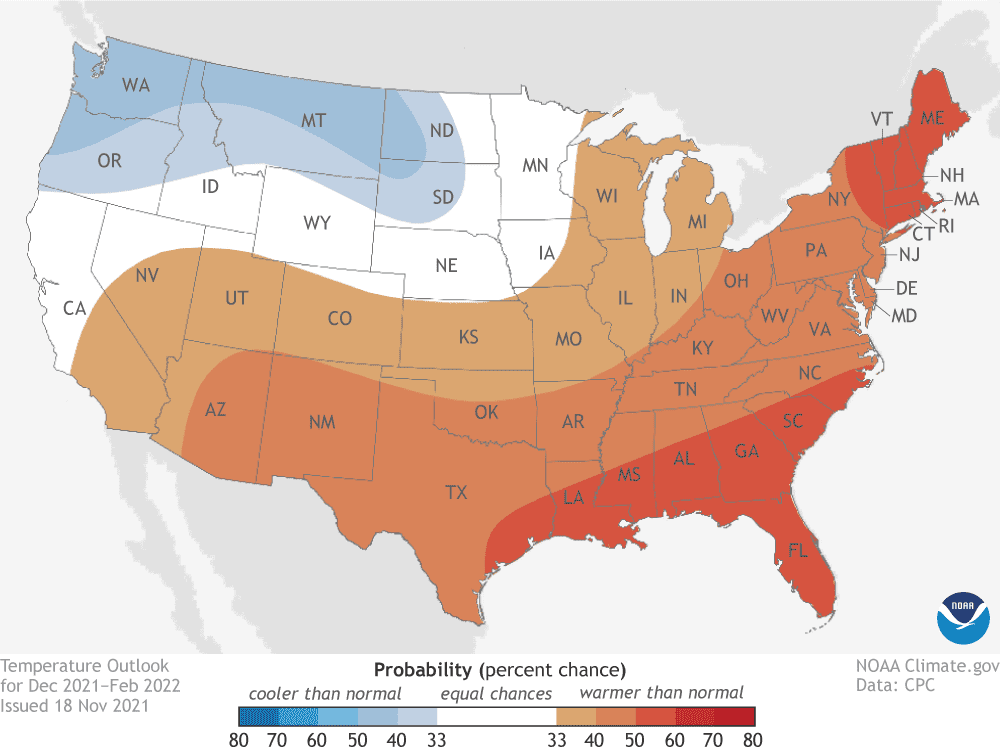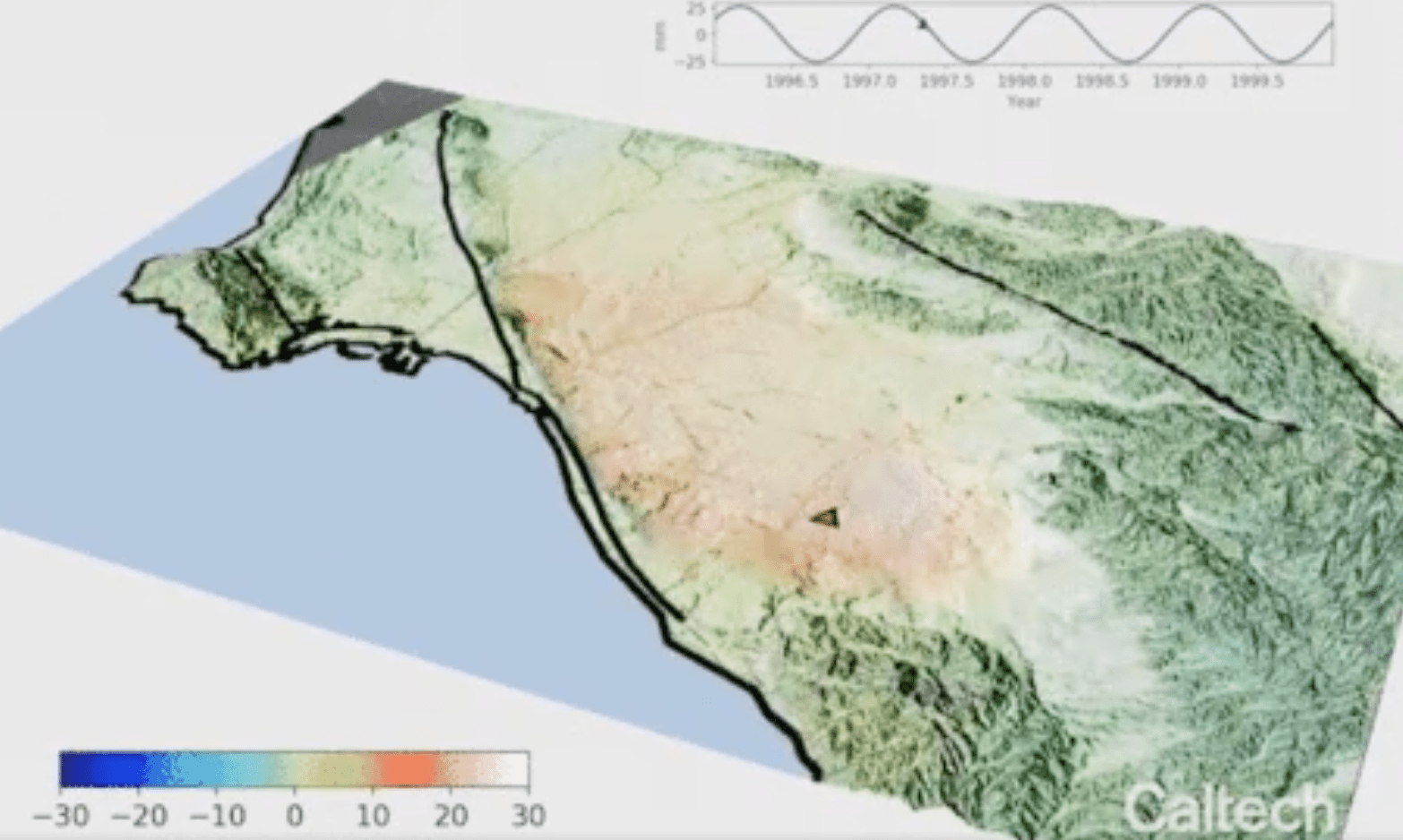NOAA’s 2021 Spring Outlook highlights video produced by the Climate.gov team in cooperation with the NWS National Water Center and the Climate Prediction Center.
Nearly one-half of the country — stretching from the Pacific Coast to the Great Plains and upper Midwest — is currently experiencing moderate to exceptional drought conditions, and that is expected to continue and expand, according to NOAA’s US recently released Spring Outlook.
Drier conditions in the Southwest U.S. associated with La Niña and the failed 2020 summer monsoon have been contributing factors to the development and intensification of what represents the most significant U.S. spring drought since 2013, which will impact approximately 74 million people.
“The Southwest U.S., which is already experiencing widespread severe to exceptional drought, will remain the hardest-hit region in the U.S., and water supply will continue to be a concern this spring in these drought-affected areas. This is a major change from recent years where millions were impacted by severe flooding. Nonetheless, NOAA’s forecasts and outlooks will continue to serve as a resource for emergency managers and community decision-makers as they navigate all potential extreme seasonal weather and water events.”
– Mary Erickson, deputy director of the National Weather Service
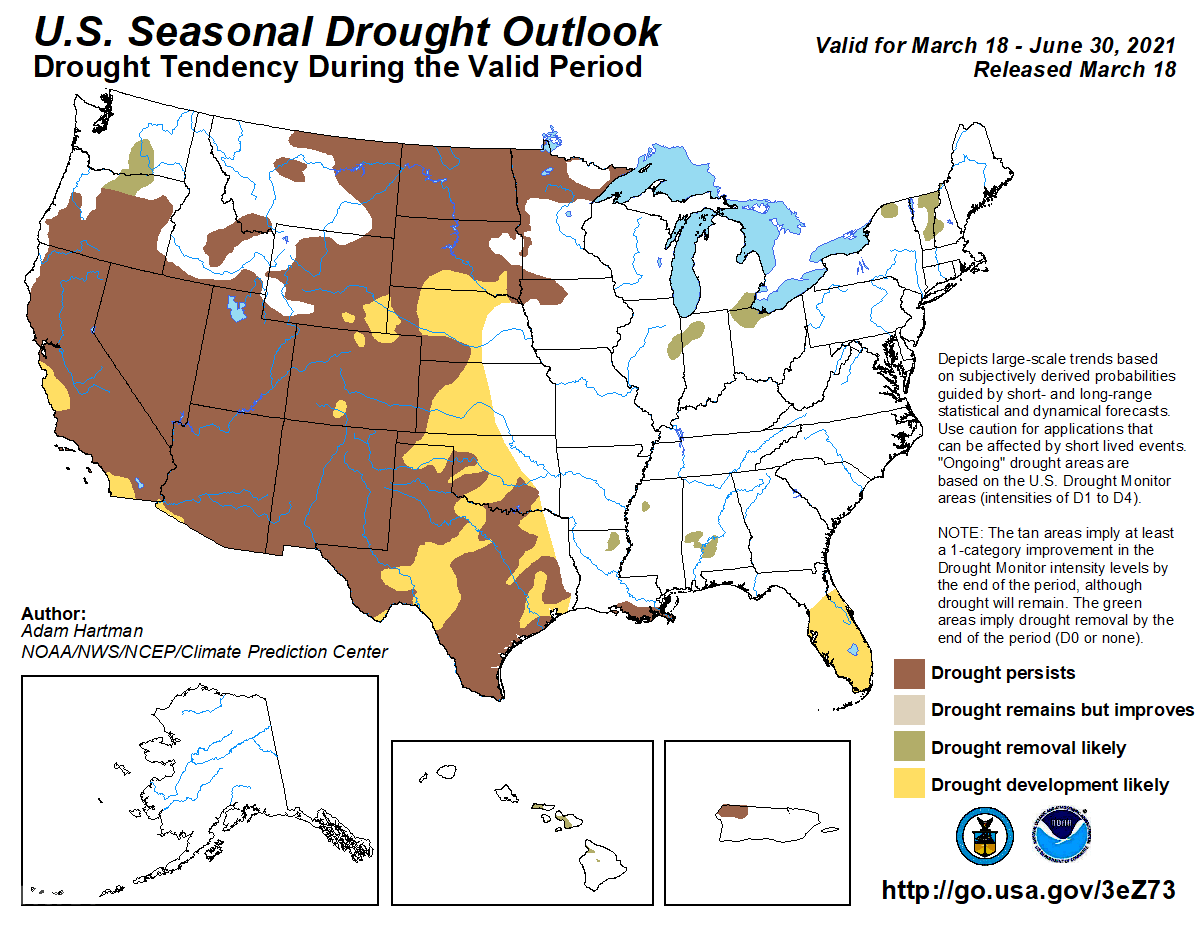
Warmer-than-average temperatures this spring and low soil moisture will allow drought conditions to develop and expand in the southern and central Great Plains as well as southern Florida. In the northern Plains, existing drought could intensify if subnormal spring precipitation occurs. Drought improvement during the next few months is likely in the Pacific Northwest, Midwest, New England and Hawaii. In drought-affected areas, rangeland, pastures, and winter wheat have already experienced adverse effects, which were exacerbated by the severe February cold outbreak.
Temperature and precipitation outlook
For April through June, warmer-than-normal temperatures are favored for the entire contiguous U.S. with the exception of Western Montana, northern Idaho, and parts of Oregon and Washington. Hawaii, western and northern Alaska are also forecast to see above-normal temperatures. Below-normal temperatures are most likely for parts of southern Alaska, the Alaska Panhandle, and parts of Washington state, according to the NOAA forecast.
The precipitation outlook favors above-normal precipitation for parts of the Midwest, the Great Lakes, the Mid-Atlantic, the Northeast, and in Hawaii, while below-normal precipitation is forecast across the southern Plains and much of the West.
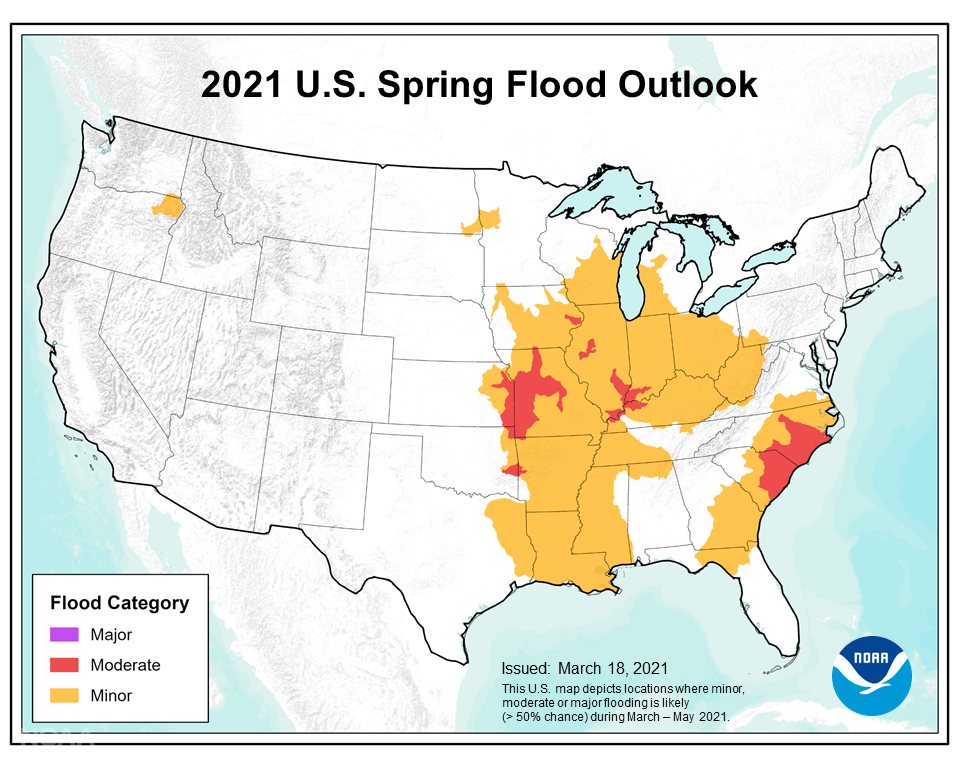
Spring flood risk
NOAA hydrologists are forecasting limited moderate flooding this spring and no areas with a greater than a 50% chance of major flooding for the first time since 2018. Widespread minor to moderate flooding is predicted across the Coastal Plain of the Carolinas while minor to isolated moderate flooding is predicted for the Lower Missouri and Lower Ohio River basins. Overall, this flood year is not expected to be severe or as prolonged as the previous two years.
Heavy rain in late February into mid-March has led to flooding and elevated stream flows across portions of the Midwest. Significant rainfall events could trigger flood conditions on top of already saturated soils.
A reduced flood risk exists for the majority of the Greater Mississippi River Basin, Red River of the North, and Souris Basins, primarily due to abnormally dry conditions, ongoing drought, and a lack of snowpack and associated water equivalent. However, the Coastal Plain of the Carolinas, as well as the Lower Missouri and Lower Ohio River basins, which are currently experiencing flooding, have an elevated risk of minor to moderate flooding, according to the NOAA forecast.
Water supply forecasts through spring are predicted to be below to much-below normal for most of the desert southwest, southern Oregon, and southern Idaho into much of the Rocky Mountains, which will play a major role in drought persistence this spring.
“Our national hydrologic assessment helps to inform the Nation where there will likely be too much or too little water. This spring, we anticipate a reduced risk for flooding, and forecast significantly below average water supply where impacts due to low flow contribute to the continued drought.”
– Ed Clark, director of NOAA’s National Water Center in Tuscaloosa, Alabama

